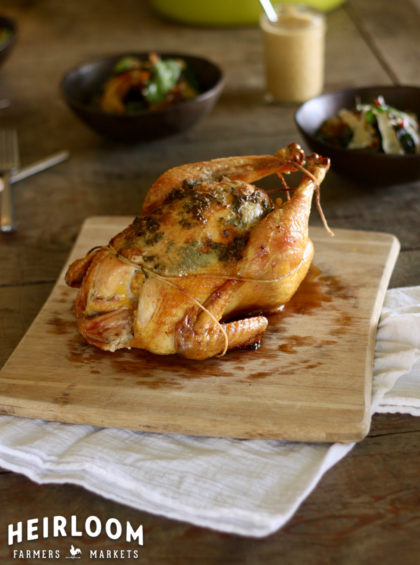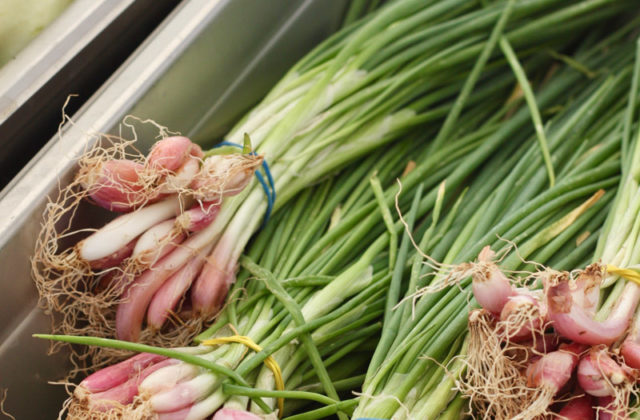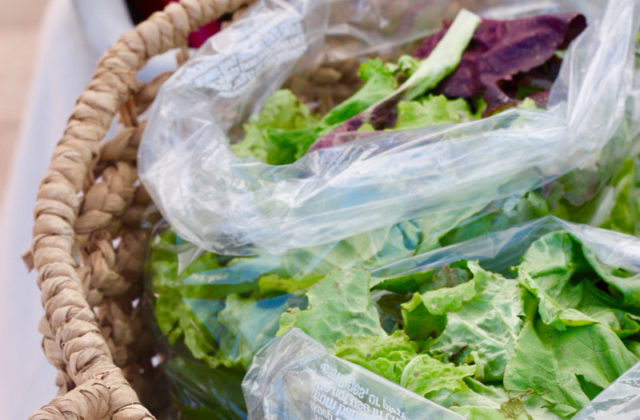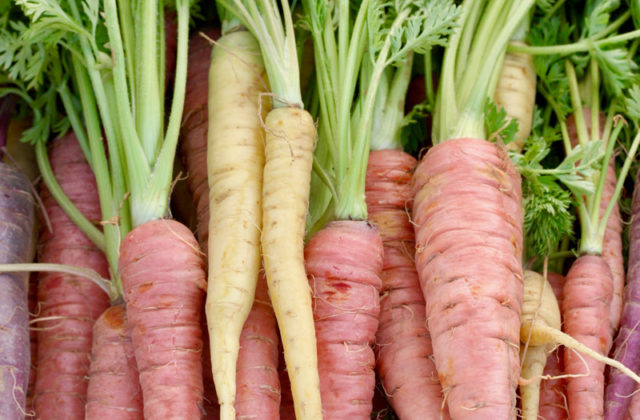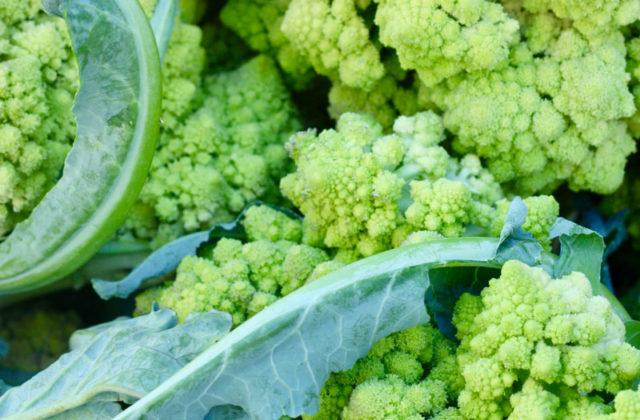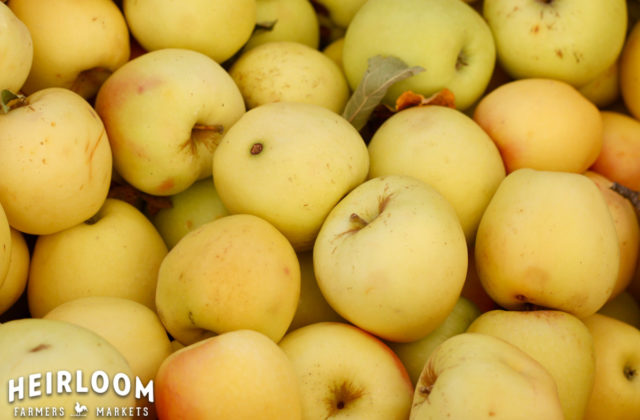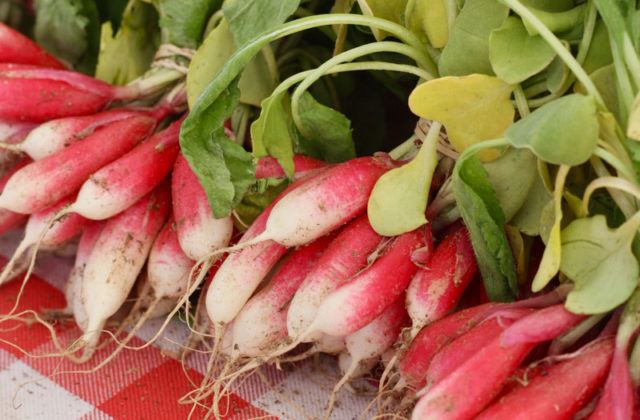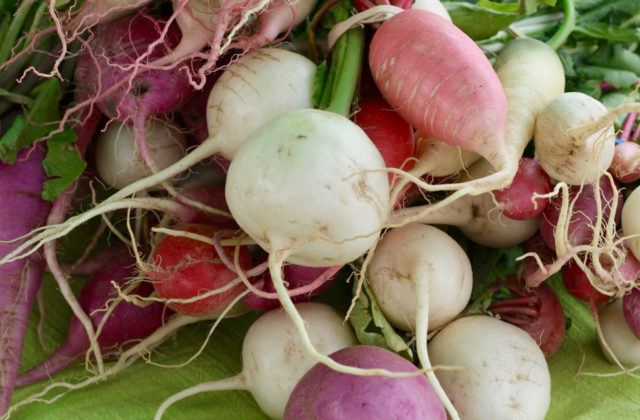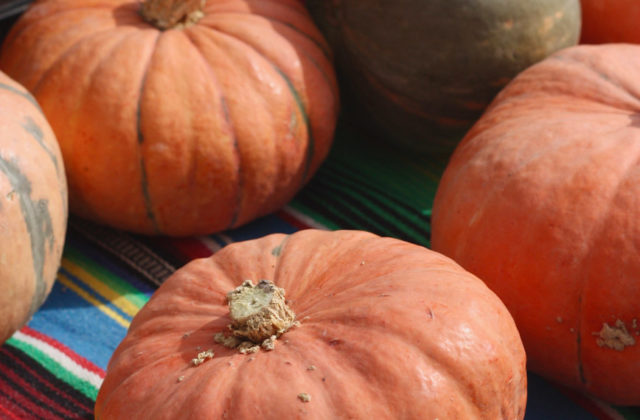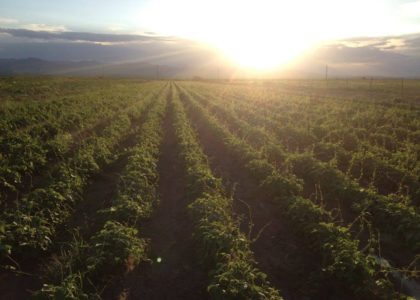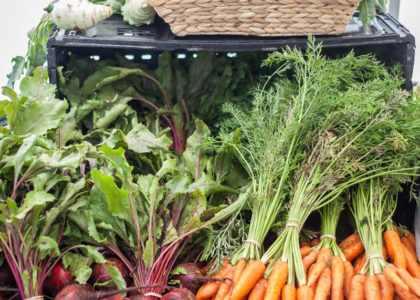Farm to Table Report – NOV/DEC 2019
Contents
• Seasonal Shift • Local Holiday Meals for Less
• Farmers Market 101 • Seasonal Recipe
Seasonal Shift
Across the country, most farmers markets are closing for the season, only to reopen when the ground thaws in late April – but for Heirloom Farmers Markets, now begins the busiest season of the year. Late fall also necessitates a seasonal shift for southern Arizona farmers, who are transitioning their crops from summer to winter on their year-round farms. For farmers’ market customers, this will translate to meals brimming with leafy greens, crisp root vegetables, and sweet winter squash.
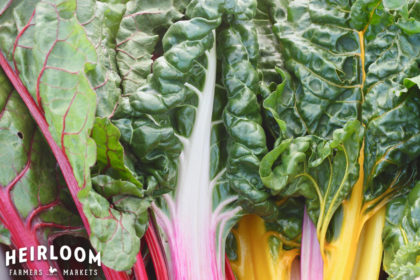 Over the coming months, farmers’ market customers can expect to see hardy greens, roots, and winter squash take the place of summer’s delicate tomatoes, zucchini, and chiles in market stalls. The leaves of winter greens like kale, Swiss chard, and collard greens actually become sweeter when they’re grown in cool weather, making this the best time of the year to get your greens in. For a warm and nourishing soup, combine a bunch of Swiss chard with rich stock and cooked Mechudo beans from Arevalos Farm. Farmer Aaron Cardona developed the black and white-speckled bean over the process of seven years, and they’ve gained an almost cult following from devoted farmers’ market customers. Now, after a long growing season, Cardona’s Mechudo beans are finally ready to harvest and should be available to buy at the Arevalos Farm market stall by the first week of December.
Over the coming months, farmers’ market customers can expect to see hardy greens, roots, and winter squash take the place of summer’s delicate tomatoes, zucchini, and chiles in market stalls. The leaves of winter greens like kale, Swiss chard, and collard greens actually become sweeter when they’re grown in cool weather, making this the best time of the year to get your greens in. For a warm and nourishing soup, combine a bunch of Swiss chard with rich stock and cooked Mechudo beans from Arevalos Farm. Farmer Aaron Cardona developed the black and white-speckled bean over the process of seven years, and they’ve gained an almost cult following from devoted farmers’ market customers. Now, after a long growing season, Cardona’s Mechudo beans are finally ready to harvest and should be available to buy at the Arevalos Farm market stall by the first week of December.
If you prefer your greens cool and crisp in a salad, you’ll want to pick up a bag of mixed salad greens from Leapin Lizard Acres Farm. Owners Khris and Quin Maly have devoted half an acre of their Marana property to growing lettuce mix, radishes, and carrots, all of which will be available at their market stall this winter. “Lettuce is the main thing that we’re dialing in on … radishes and carrots are our rotating crops,” says Khris, who’s in his second year of growing and “figuring things out” on the farm. Try tossing together local mixed greens, honey-roasted carrots, chopped i’Itoi onions, Fiore di Capra feta cheese, and a simple citrus-olive oil dressing for a tasty salad that highlights some of the season’s best produce.
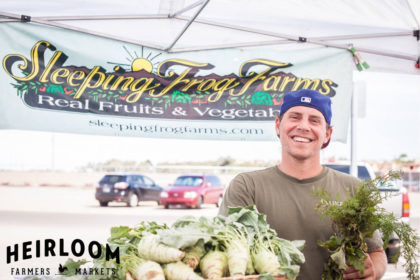
Where in many parts of the country farmers are harvesting the year’s last crops before the ground freezes, farmers in Baja Arizona are preparing for yet another growing season. While we as consumers benefit from year-round access to their locally grown produce, farmers pay the toll in time, effort, and health. Our farmers’ ability to grow food throughout all five of the region’s seasons–winter, spring, summer, monsoon, and fall–gives them little time to rest and can make arduous farm work feel endless. “We [farmers] end up paying the price and burden of the community’s high-quality food,” says Sleeping Frog Farms owner Clay Smith. Our farmers work tirelessly to feed their community nutritious food, making every bite more valuable and precious than the next.
Local Holiday Meals for Less – 8 Tips for making your meals more local and affordable this holiday season
- Toss the turkey: If you’re having a small gathering for your holiday celebration, consider buying a whole chicken (or two) instead of a turkey. (Or, skip the meat altogether and have a vegetarian meal filled with the season’s best produce.) Good-quality local meat is expensive, and the cost of a single turkey can take up your entire food budget. Buying a locally raised roasting chicken is a good compromise – you’ll get good-quality meat, spend less money, and generate less food waste.
- Mix it up: Don’t worry about making sure that every ingredient in your holiday meal is local. Spruce up less expensive dishes like rice pilaf, pasta salad, and stuffing with delicious local ingredients.
- Buy what’s in season: Buying produce that’s in season is cheaper than buying out-of-season produce. Plus, it’s easy to buy seasonal produce when you’re shopping at your farmers’ market! If you can’t find what you need to make a classic holiday dish, try creating a new holiday food tradition using local produce that’s in season.
- Host a holiday potluck: Instead of doing all the cooking yourself, ask each of your guests to bring a dish that incorporates at least one locally sourced ingredient. This will divide the cost of the meal between everyone and is a great way to introduce your friends and family to the farmers’ market.
- Keep it simple: The less ingredients you use in each dish, the less expensive your meal will be. When you use fresh, seasonal ingredients from the farmers market, you’ll find that you don’t need much else to make your food taste amazing.
- Buy whole, unprocessed ingredients: Buy ingredients in their purest form and use everything, from carrot tops to radish greens, to get the most food for your dollar.
- Eat it twice: If you have leftovers from your holiday meal, turn them into a second meal the next day. If you can’t bear the thought of eating the same thing twice, get creative and turn your leftovers into something completely different – like soup, sandwiches, and casseroles.
- Use Double Up Food Bucks: If you receive SNAP dollars, you can double them when you buy locally grown fruits and vegetables at the farmers’ market. To do this, bring your SNAP Quest/EBT (formerly food stamps) card to any of the five Heirloom Farmers Markets. Look for the Market Info Booth, and stop there first to learn more.Then, buy SNAP-eligible items such as fruits, vegetables, bread, dairy, meat, and dried beans. For every $1 you spend on your SNAP card, you’ll receive $1 in Double Up Food Bucks to spend on fresh, Arizona-grown produce, up to $20 per day.
Farmers’ Market 101- How to Make the farmers’ market fun for everyone
The farmers’ market is a unique place where everyone is welcome to come together, enjoy live music, and support local food producers. Although there aren’t many rules when it comes to joining in on farmers’ market fun, there are a few things we can all do to make it a great experience for ourselves and everyone in our community.
Shopping at the farmers’ market is very different than shopping at a grocery store, which often carries the same selection of produce every day of the year. For this reason, it’s good to have loose expectations when it comes to what produce you might find at the market. If you’re heading there with your weekly meal plan in mind, familiarize yourself with what’s in season so that you have a better idea of what fruits and veggies you can expect to find in that given season. HeirloomFM.org has a great seasonal produce list that you can use for reference, and talking to local farmers is another great way to learn about our region’s unique growing seasons.
Before you head to the market, make sure that you and your family have everything you need to be happy and healthy once you get there. Check the weather and dress accordingly for cold wind, scorching sun, and drizzly mornings – a cozy sweater, sun hat, or umbrella can make all the difference when it comes to protecting yourself from the natural elements and enjoying our outdoor venue. To ensure that you stay hydrated and healthy, we recommend that you bring a full water bottle and sunscreen with you. If you’re planning to do some shopping at the market, make sure you have your preferred form of payment (cash, debit/credit card, SNAP Quest/EBT card) and a few reusable bags for carrying your goods.
Once you have everything you need to have a great time at the market, help everyone else enjoy their experience, too. The best way to do this is to be kind to those around you and remember that we all have the power to make the people around us feel included and welcome in this special community space.
NOVEMBER/DECEMBER SEASONAL RECIPE
